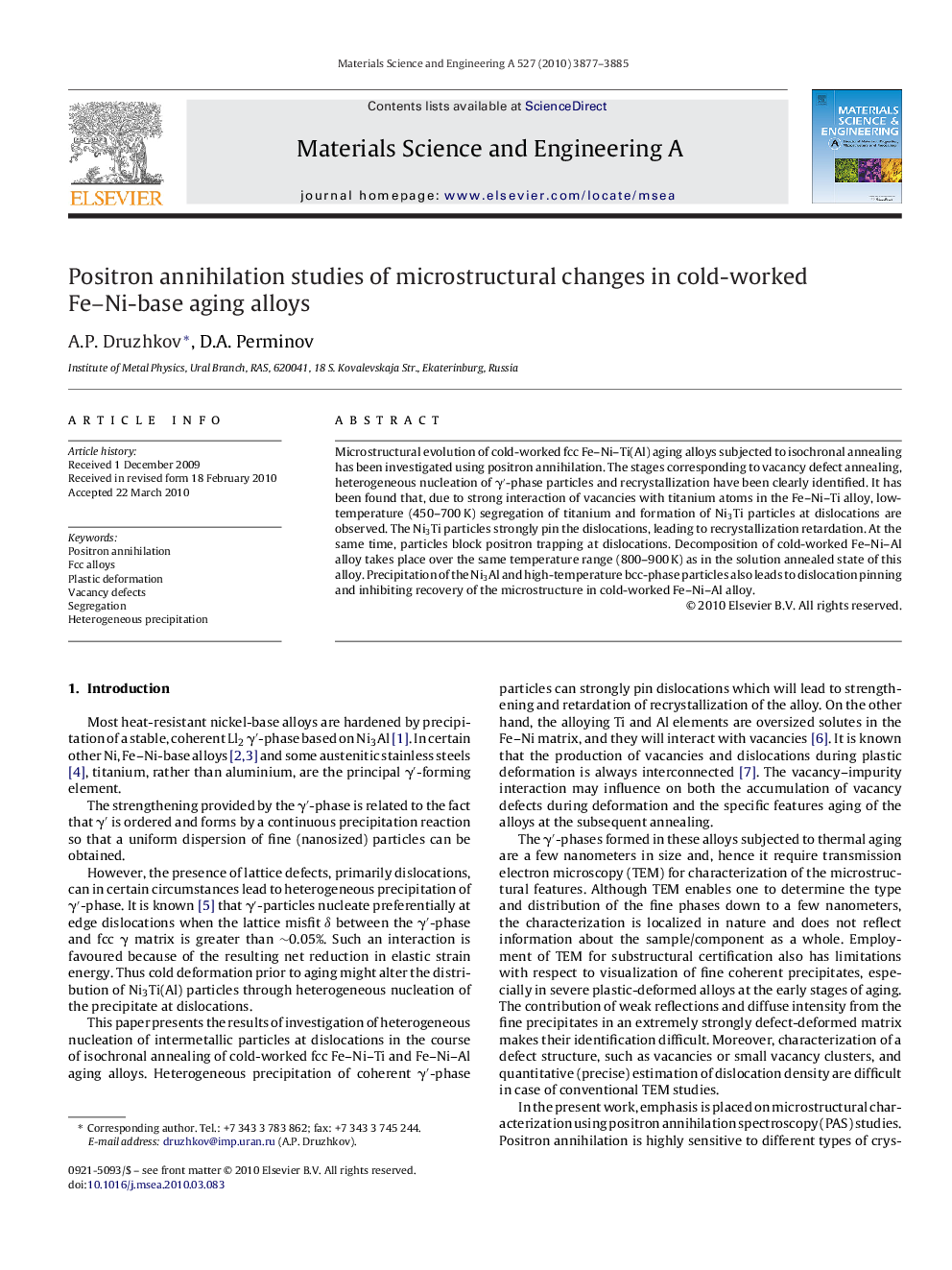| Article ID | Journal | Published Year | Pages | File Type |
|---|---|---|---|---|
| 1579522 | Materials Science and Engineering: A | 2010 | 9 Pages |
Microstructural evolution of cold-worked fcc Fe–Ni–Ti(Al) aging alloys subjected to isochronal annealing has been investigated using positron annihilation. The stages corresponding to vacancy defect annealing, heterogeneous nucleation of γ′-phase particles and recrystallization have been clearly identified. It has been found that, due to strong interaction of vacancies with titanium atoms in the Fe–Ni–Ti alloy, low-temperature (450–700 K) segregation of titanium and formation of Ni3Ti particles at dislocations are observed. The Ni3Ti particles strongly pin the dislocations, leading to recrystallization retardation. At the same time, particles block positron trapping at dislocations. Decomposition of cold-worked Fe–Ni–Al alloy takes place over the same temperature range (800–900 K) as in the solution annealed state of this alloy. Precipitation of the Ni3Al and high-temperature bcc-phase particles also leads to dislocation pinning and inhibiting recovery of the microstructure in cold-worked Fe–Ni–Al alloy.
